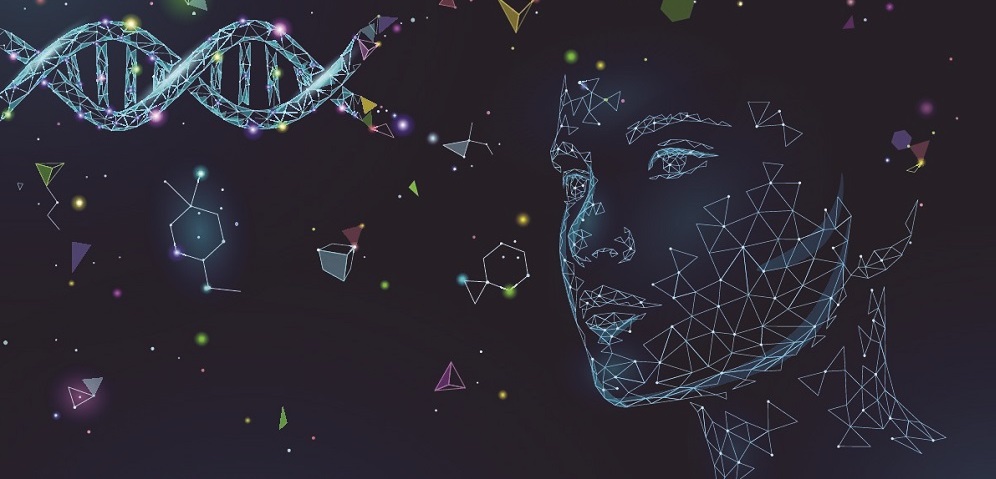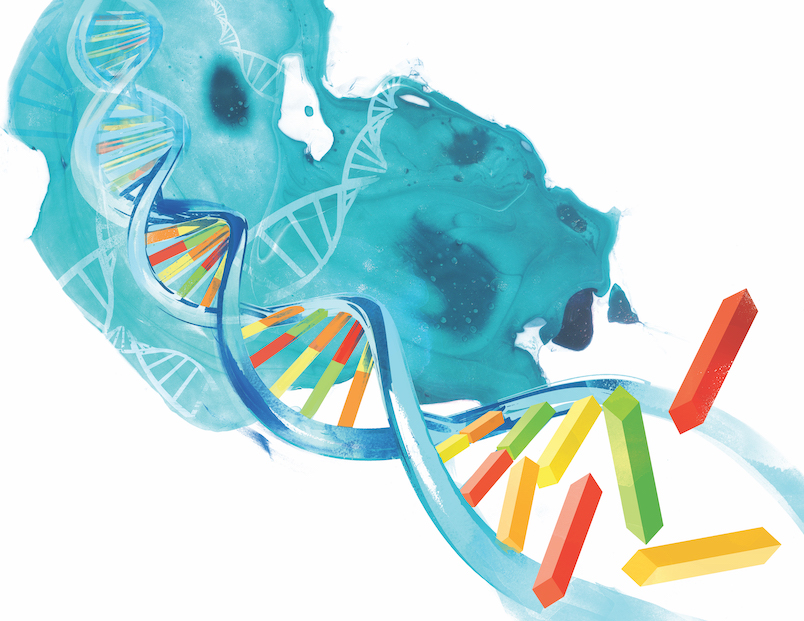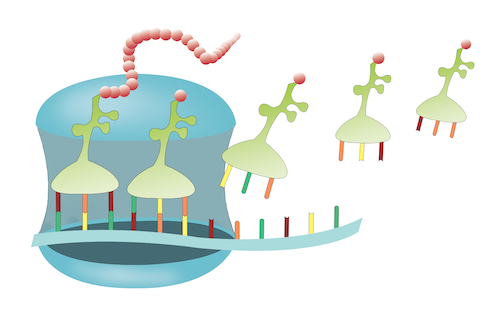
It’s an incredible privilege to be paid to study the wonders of the living world. I have heard many scientists make statements along these lines, and Professor John Bryant is prominent among them. Here, he shares his sense of complete amazement at the simplicity of the DNA code, and yet its very complex role as the software behind all of life. I hope you enjoy this whirlwind tour of molecular biology.
I have worked directly or indirectly on DNA since I was a student. Molecular biology (the study of the molecules that can be found inside cells) is thus an area of science with which I am very familiar. It is replete with marvellous mechanisms, although, for those of us who are practitioners, it is too easy to take those marvels for granted. We need to ‘stand and stare’ perhaps for just a few minutes to remind ourselves that the whole topic is amazing.

Let me start with the genetic material itself, DNA. DNA molecules are not really complex, although they can be very long (that is, in relation the dimensions of living cells). DNA molecules are polymers, that is they are built of many individual components linked together in a chain. These individual components are called bases, and there are only four sorts – as I said, DNA is not a complex molecule – and they can occur in any order). This simplicity fooled scientists for a long time: how could such a simple molecule carry genetic information? It was not until the end of World War II that this key role of DNA was finally demonstrated beyond doubt.
All the information required for the development and second-by-second life of all organisms is encoded in DNA. The specific information comes from the order and the number of bases (read in groups of three), in subsections of DNA molecules that we call genes. On top of that – and this fact still fills me with amazement – all living organisms on Earth read the DNA code in the same way. Every living organism is related to every other, which is consistent with the idea that there was just one origin of life and all life-forms are derived from that common beginning.
But there is more. The information in DNA must be passed on. Every new cell needs a faithful copy of the genetic information from its ‘parent’. This is where the famous ‘double helix’[1] comes in. A molecule of DNA consists of two helices wound round each other and which are held together because of specific abilities of the bases to form pairs with each other. Using just the initials of the bases to indicate their names, A in one helix can only pair with T in the other; similarly, G can only pair with C. I’m sure you can see that this immediately provides the means of passing on the code faithfully. If the two helices separate, then each single helix directs the production of a new partner helix; for example, a T in the pre-existing single helix dictates that there must be an A at that position in the new helix. The structure of DNA means that it can direct its own faithful copying. That is both awesome and beautiful in its simplicity; if a human engineer had come up with this, we would say that he/she was a genius. As a Christian I say that the genius here is God.

So the genetic code is safely passed on from generation to generation, but what does the code actually do? Well, it directs the synthesis of proteins, the cell’s working molecules. There are thousands of different sorts, many of which are enzymes – proteins that carry out biochemical reactions. Proteins are also a kind of polymer (see above) built with amino acids, of which there are 20 types that vary significantly from each other in shape and size. The shape of a protein determines its function, and depends on the number and the order of different types of amino acid within the molecule.
A code based on just the four components of DNA tells the cell the order in which to put the amino acids in a protein. How does this happen? How is the code translated? The answer is not ‘Google Translate’ as one school student suggested to me. I’d like you to envisage the code as a row of beads of four different colours and the cell’s pool of amino acids as a pile of LEGOTM bricks of several different shapes and sizes. Those bricks do not fit onto the beads. In the same way, an amino acid cannot on its own recognise three bases and line up with them. The answer to this conundrum is in the form of adapter molecules which can recognise an individual amino acid and the three-base code that specifies that acid. These adaptor molecules ensure that the amino acids are built into proteins in the right order. It is an amazing mechanism and we currently have no understanding of how it evolved.

This leads back to a point that I made at the beginning of this article. In my recent book[2] I wrote ‘… I cannot help think that we biologists are so used to this that we have become a little blasé.’ When we pause to think a little more deeply we can only react with awe and wonder at God’s magnificent creation.
[1] If you are not sure what a helix is, think of a ‘spiral’ staircase. A spiral staircase is actually not a spiral but a helix
[2] Graham Swinerd and John Bryant (2020) From the Big Bang to Biology, Where is God? Kindle Direct Publishing. The quote comes from Chapter 5.